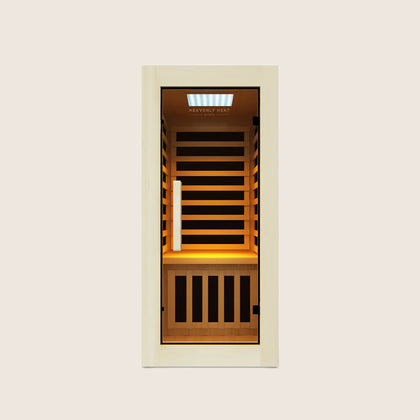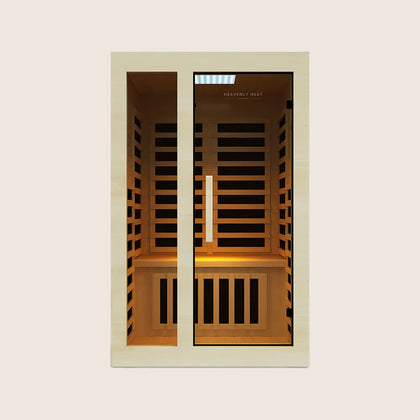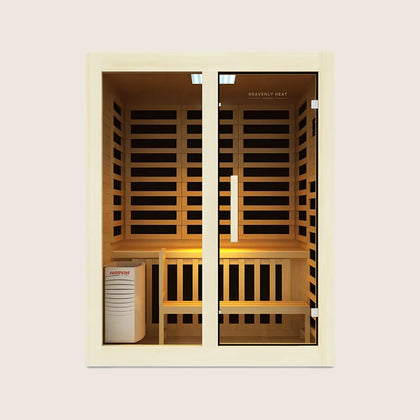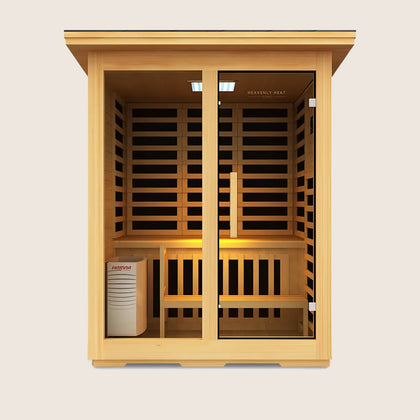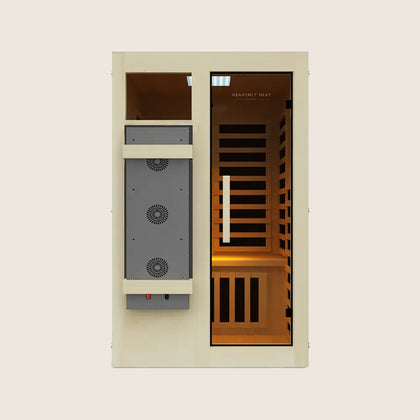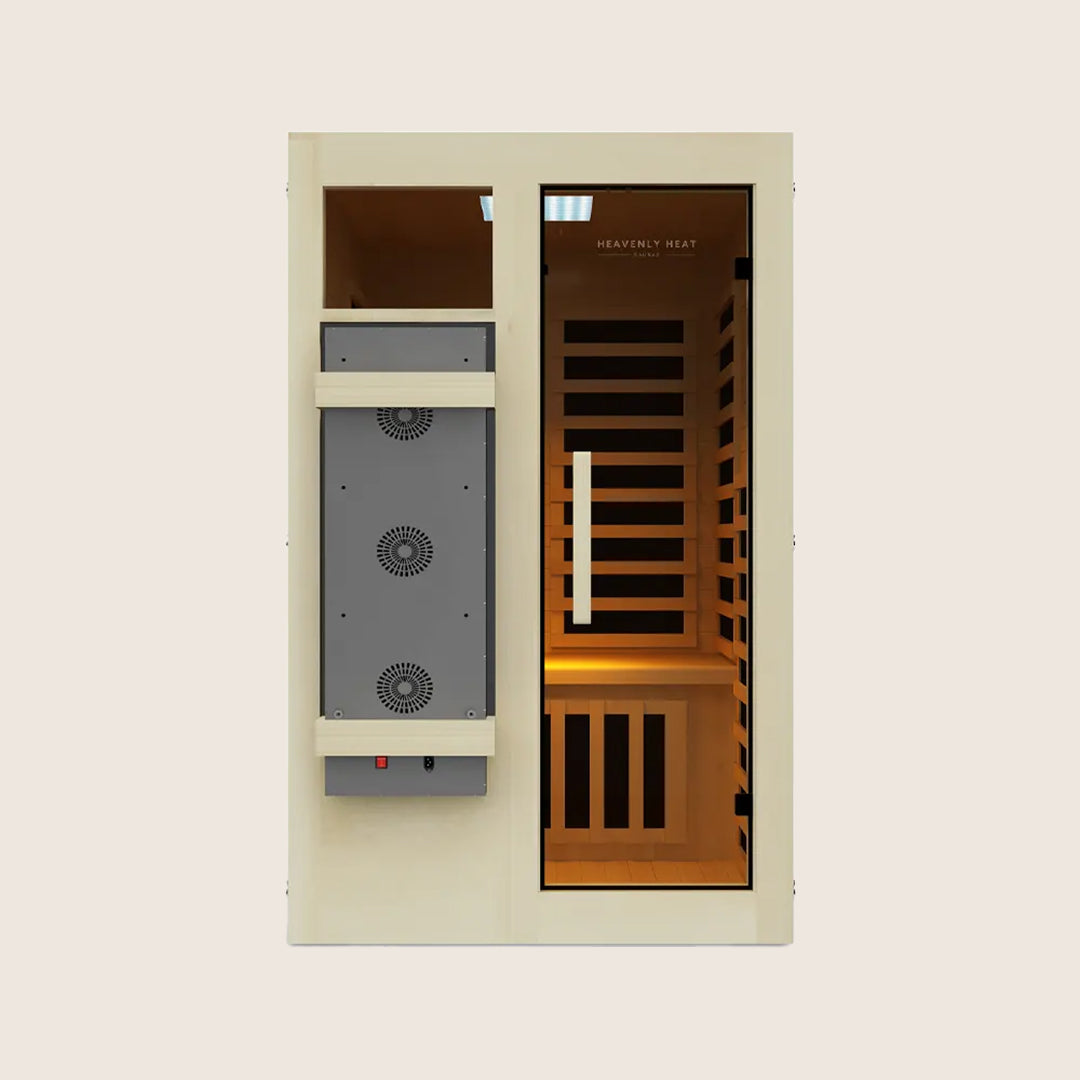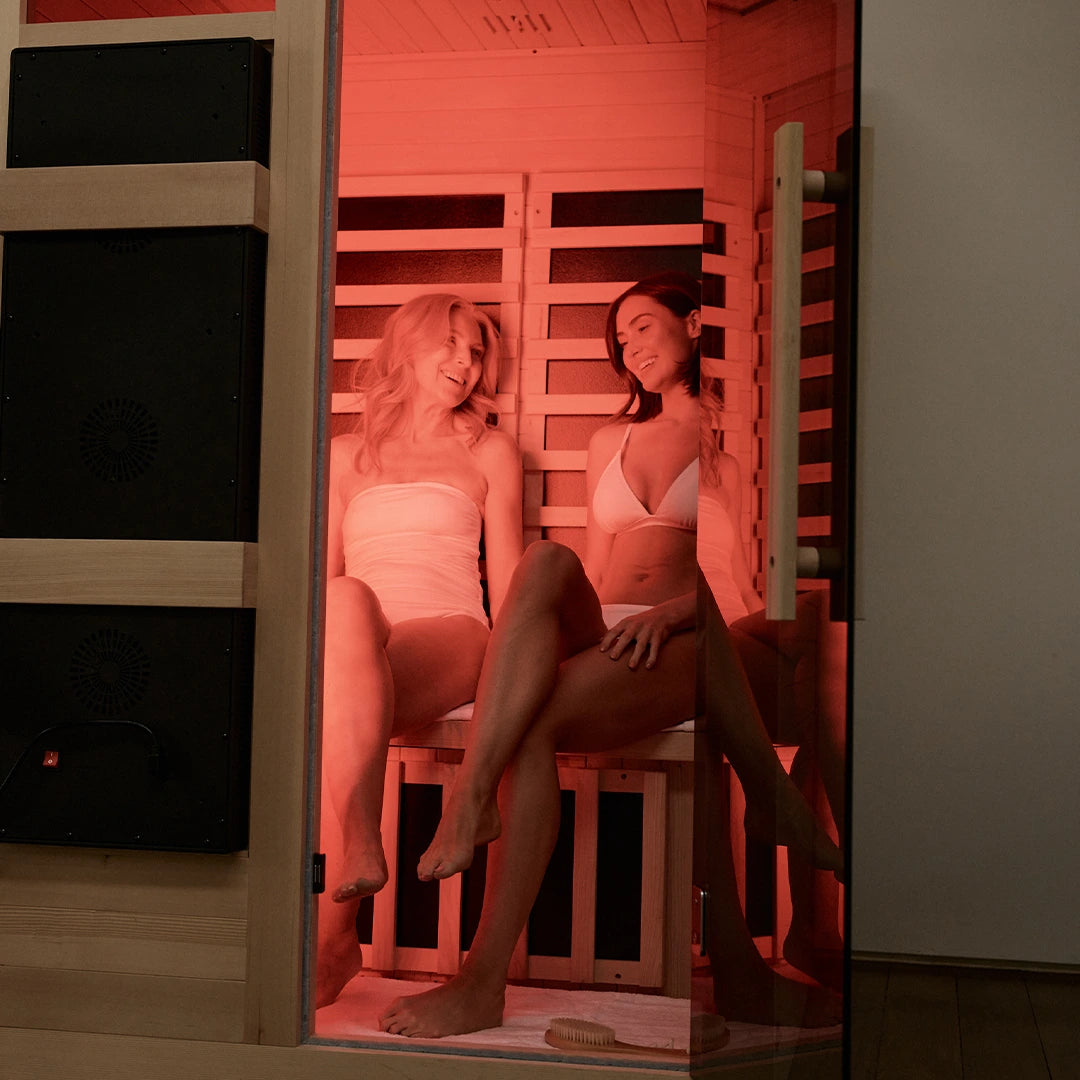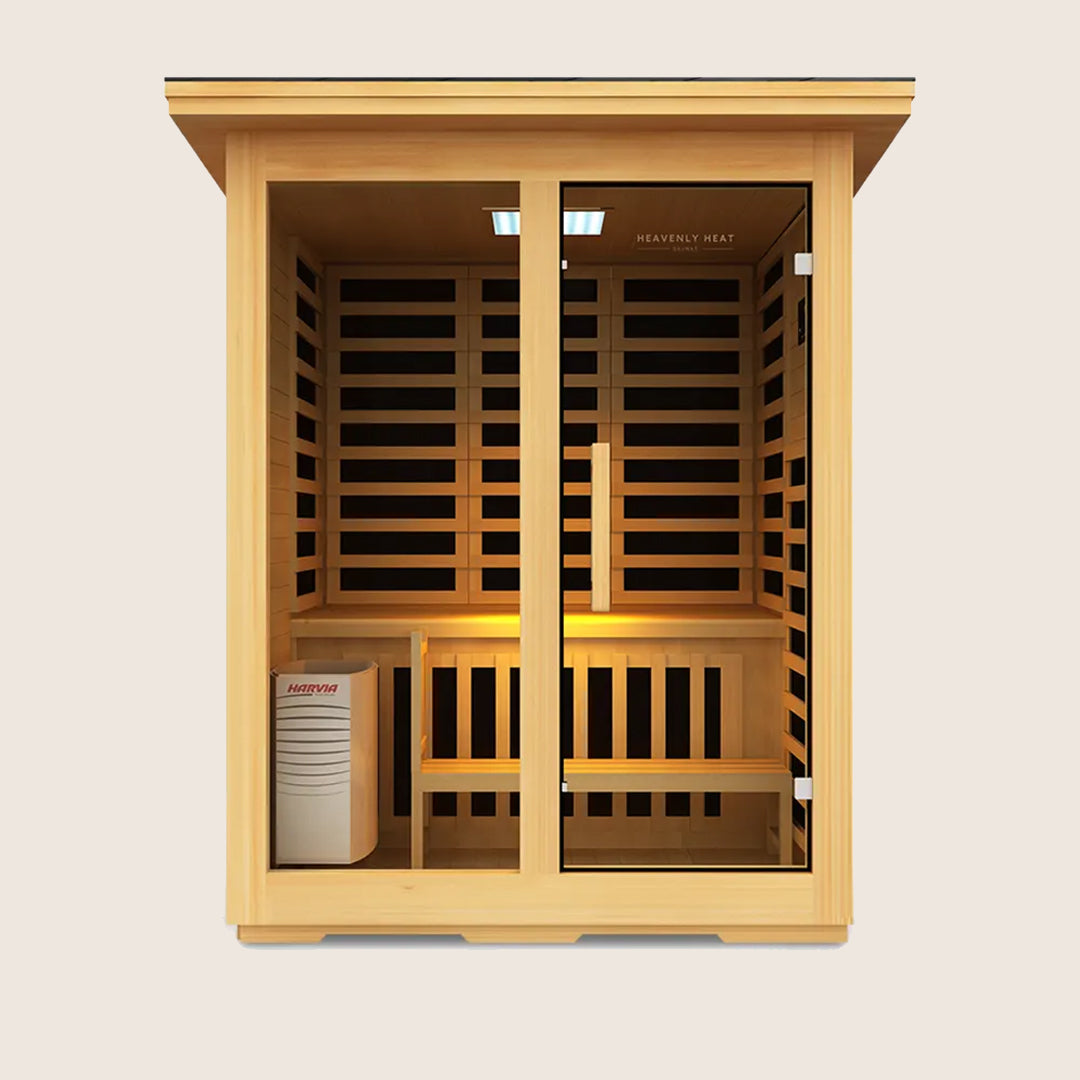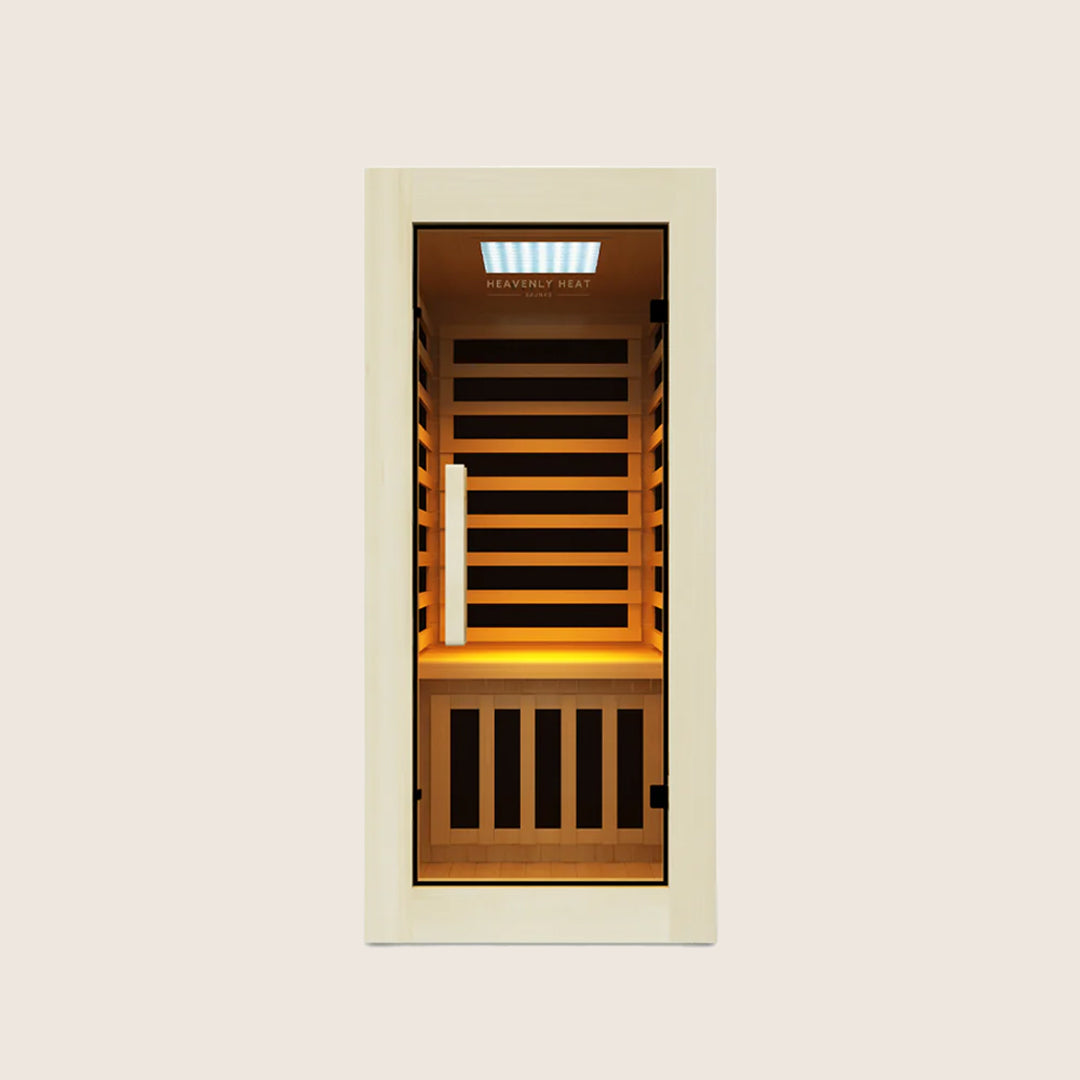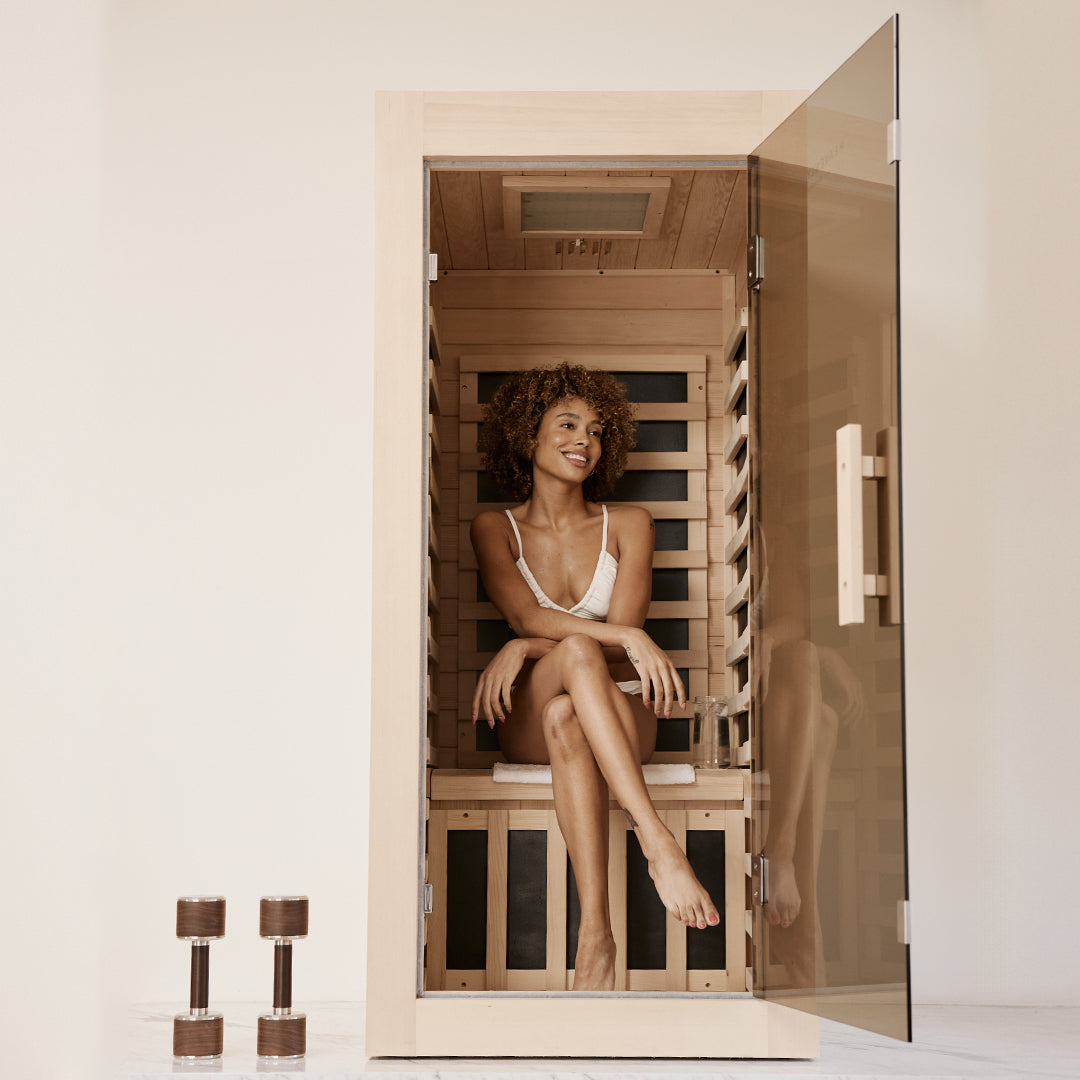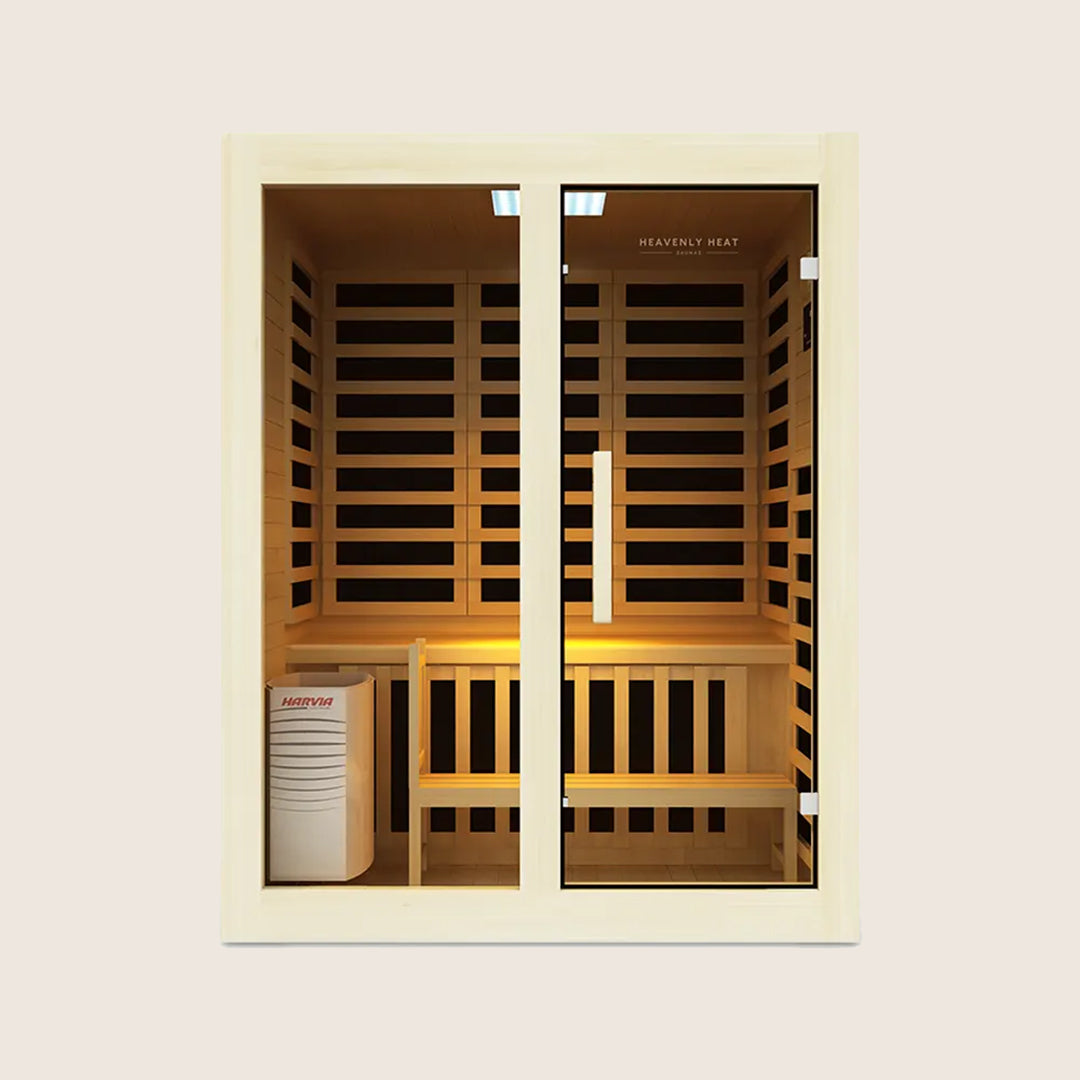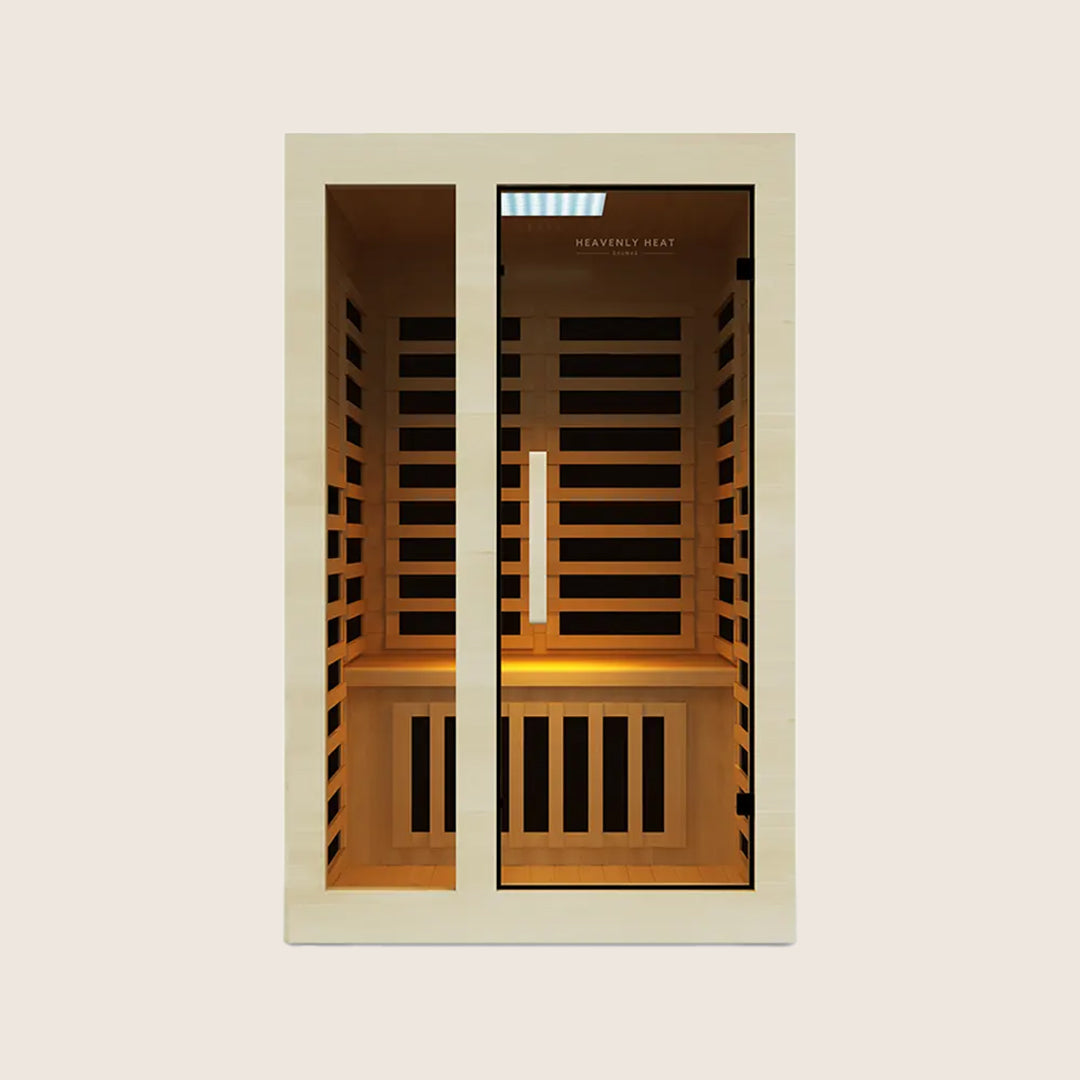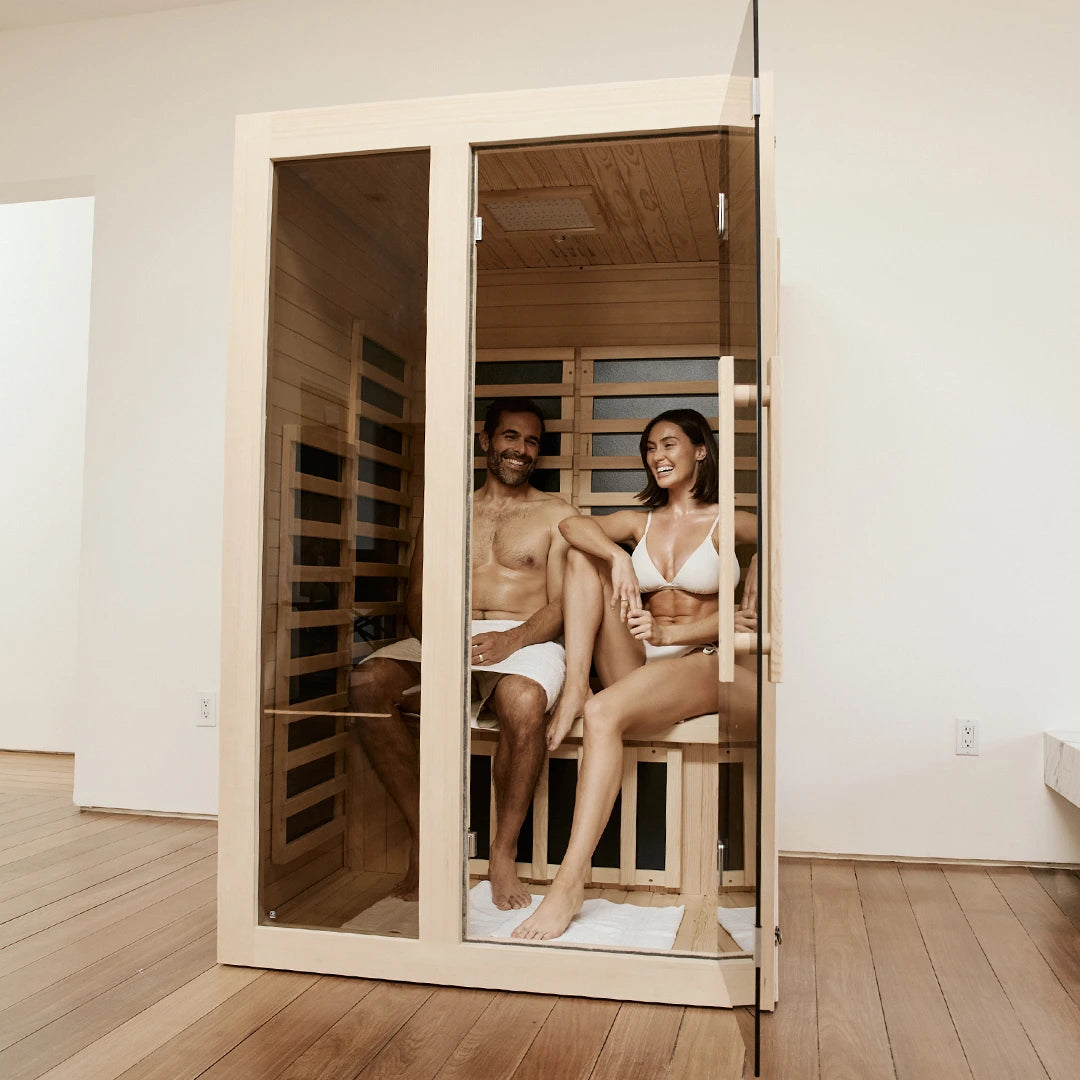Safest Infrared Saunas With Low EMF Levels [Tested in 2025]
![Safest Infrared Saunas With Low EMF Levels [Tested in 2025]](http://heavenlyheatsaunas.com/cdn/shop/articles/add-a-subheading-4_768e0824-c231-4516-ba9e-aa0add3fe091.jpg?v=1759745604&width=3840)
If you love saunas but worry about hidden risks, this guide is for you. We explore the safest infrared saunas that keep EMF levels low, so you relax without concern.
From testing results to expert tips, you’ll learn how to choose, measure, and enjoy a sauna safely—making every session truly stress-free.
Table of contents
Key Takeaways
Choose Low-EMF Saunas: Opt for infrared or shielded models to reduce exposure.
Measure EMF Levels: Use EMF meters to monitor your sauna environment.
Maintain Safe Distance: Sit away from heating elements to minimize EMF intensity.
Limit Session Time: Keep sessions short to lower overall EMF exposure.
Use Natural Materials: Wood and other natural interiors help reduce EMF reflection.
![Safest Infrared Saunas With Low EMF Levels [Tested in 2025]](https://cdn.shopify.com/s/files/1/0901/6334/7735/files/untitled-design-10_90a0af15-2c78-46e5-9b1c-fe1d584f6263.jpg?v=1759737959)
Safest Infrared Saunas With Low EMF Levels [Tested in 2025]
Many people report feeling restless, fatigued, or experiencing headaches and sleep disturbances when exposed to high levels of EMFs, though research is still emerging, and the condition—sometimes called electromagnetic hypersensitivity—isn’t medically recognized.
According to healthline, symptoms can also include dizziness, irritability, or skin tingling.
Heavenly Heat Saunas are designed with ultra-low EMF and ELF heaters, Faraday shielding, and zero-VOC materials, providing a safe, toxin-free environment for relaxation.
Users can enjoy the detoxifying warmth and stress relief of infrared therapy without worry, helping to soothe tension, improve sleep, and support overall wellness in a clean, low-EMF space.
What Are Electromagnetic Fields (EMFs)?
Electromagnetic fields (EMFs) are physical fields created by oscillating electric and magnetic forces that can interact with matter, influencing biological processes depending on their frequency and energy.
The effects vary widely—high-energy ionizing radiation can displace electrons, while lower-energy non-ionizing EMFs, such as those from household appliances, interact differently with atoms and molecules.
Both natural and human-made sources exist. The National Cancer Institute notes that the Earth’s magnetic field is a natural EMF, while human-made sources include power lines, electrical wiring, and wireless technologies like Wi-Fi and Bluetooth.
EMFs are typically categorized by frequency: extremely low frequency (ELF) ranges from 1–300 Hz, radiofrequency (RF) spans 3 kHz–300 GHz, and microwaves occupy the upper RF range, used in ovens and satellite communications.
The World Health Organization highlights that radiofrequency EMFs are classified by the International Agency for Research on Cancer as “possibly carcinogenic,” reflecting credible but not definitive evidence. Understanding EMFs helps us navigate their presence in daily life safely.
Understanding EMF and ELF in Saunas
Understanding EMF and ELF in saunas is key to safe use. EMF are energy fields from electricity, while ELF is a low-frequency subset. In saunas, both originate from heating components, measured in milligauss (mG) and volts per meter (V/m). Low-EMF/ELF technology minimizes exposure effectively.
EMF Levels in Different Sauna Types
Steam Sauna
Steam saunas emit EMF mainly from the steam generator. The closer you sit to the generator, the higher your exposure.
Compared to infrared saunas, steam saunas usually have lower EMF levels, but exposure can still vary.
The EMFs are not constant because the generator switches on and off, creating intermittent spikes.
Sauna design and seating position matter, so users should stay mindful of where they sit. For those worried about safety, low-EMF steam sauna models are available on the market.
Choosing one of these can lower risk while still giving the full benefits of a traditional steam session.
Infrared Sauna
Infrared saunas typically emit low levels of EMF, ranging from 6–10 mG for standard models, under 3 mG for “ultra-low” options, and under 2 mG for near-zero designs, making them safe for everyday use.
However, EMF levels can vary significantly between brands and models, depending on design, wiring, and heater placement.
Independent tests show that modern saunas often use shielded wiring and strategic heater placement to minimize exposure, with top brands like Clearlight, Good Health Saunas, and High Tech Health achieving levels close to zero in the seating area.
Even at hotspots, EMF readings remain well below safety thresholds, often just 1/100th of the 4200 V/m² limit established for sensitive populations.
While manufacturers provide EMF data, truly independent testing is more reliable, offering a full picture of exposure.
For extra peace of mind, consumers can verify readings with a personal EMF meter, choose low-EMF models, and maintain some distance from heating elements. Modern infrared saunas, when selected carefully, are both relaxing and safe.
Traditional Sauna
When it comes to EMF exposure, traditional saunas are surprisingly low-risk. Wood-burning saunas generate virtually no electromagnetic fields, making them ideal for those seeking a completely EMF-free experience.
Electric traditional saunas do emit some EMF from their heating elements and wiring, but levels are typically very low—around 0–2 milligauss—especially when you sit a few feet away.
For perspective, international guidelines from the WHO and ICNIRP consider anything under 2,000 mG safe for the general public, so traditional saunas fall well within safe limits.
The heating elements are often shielded, and the heat radiates from the stones rather than directly from the electric source, which further reduces exposure.
Compared to infrared saunas, where panels sit just inches from the body and can produce higher EMF readings, traditional setups offer a more relaxed, low-EMF experience.
Whether you prefer a wood-burning stove for zero EMF or an electric heater with minor, safe exposure, traditional saunas remain a health-conscious choice for enjoying dry heat and relaxation.
What Makes a Sauna Truly Low EMF
A truly low-EMF sauna is designed to minimize exposure to electromagnetic fields while still delivering the full benefits of infrared heat.
Organizations like the ICNIRP recommend that the general public avoid prolonged exposure to EMFs above 1000 microtesla (µT), and workers stay below 2000 µT.
Traditional infrared saunas, especially older models, can sometimes emit higher EMF levels, whereas low-EMF saunas use shielding technology to keep emissions well below these safety limits.
To ensure accuracy, EMF levels are measured using handheld meters such as gauss meters for magnetic fields, electric field meters for voltage exposure, or combination meters that track both.
Testing focuses on the heating panels, wiring, control panels, and seating areas, often after the sauna reaches operating temperature.
Reputable testing compares results against ICNIRP or IEEE guidelines, while some brands adhere to even stricter standards, around 3 mG.
Properly measured and certified, low-EMF saunas offer a safe, relaxing experience without unnecessary exposure to electromagnetic fields.
How To Test EMF Levels in Your Sauna at Home?
Testing EMF levels in your sauna at home is easy with a simple handheld EMF meter. By checking different spots—like the middle of the room, the bench, and near the heaters—you can see how electric and magnetic fields change with the lights and heaters on.
Heavenly Heat Saunas make this process worry-free by offering ultra low-EMF infrared saunas that are safe, reliable, and designed for comfort.
Their infrared technology warms your body directly, giving you a soothing, energy-efficient experience without the high EMF exposure of traditional saunas.
With thoughtful design, measurable safety, and gentle heat, Heavenly Heat Saunas provide a trustworthy way to relax, recharge, and enjoy the benefits of infrared therapy right in the comfort of your home.
Tips to Further Reduce EMF Exposure in Your Sauna
Choose Low-EMF or EMF-Shielded Saunas
If you’re concerned about EMF exposure during sauna sessions, opting for a low-EMF or EMF-shielded sauna can make a significant difference.
Studies show that traditional infrared saunas may expose users to higher electromagnetic fields, while low-EMF saunas are designed specifically to reduce these risks.
These saunas often follow international safety guidelines from organizations like ICNIRP and IEEE, keeping EMF levels well below limits considered safe for daily use.
Many reputable brands, such as Clearlight, Good Health, and Sunlighten, have independent third-party tests verifying their low-EMF claims, often reporting levels as low as 0.12 to 1.63 milligauss.
When evaluating a sauna, check that the test reports are transparent, comprehensive, and performed by trusted labs.
By choosing saunas with verified EMF shielding, you can enjoy the benefits of infrared therapy while minimizing unnecessary exposure to electromagnetic radiation.
Maintain Safe Distance from Heating Elements
Keeping a safe distance from sauna heating elements can significantly reduce your EMF exposure.
Research highlighted by the National Institute of Environmental Health Sciences shows that magnetic field strength drops sharply as you move away from the source.
For instance, a 230 kV transmission line measures 57.5 milligauss right next to it but only 1.8 milligauss at 200 feet.
Similar trends appear inside saunas: measurements of traditional and low-EMF heaters show that even a few feet of distance can lower exposure to nearly ambient levels.
Being just 18 inches to 3 feet away from a sauna element often reduces EMF to practically negligible amounts.
Organizations like ICNIRP, recognized by the WHO, set strict guidelines to ensure public safety, with limits far below levels known to cause harm.
While areas closest to the heaters carry the highest EMF, simply choosing your seating wisely allows you to enjoy your sauna while keeping exposure minimal and following internationally recognized safety standards.
Limit Sauna Time to Minimize Exposure
Limit sauna sessions to reduce EMF exposure. Experts recommend 15–30 minutes per session, with one or two sessions per day. Shorter, fewer sessions help lower EMF risks while still providing sauna benefits.
Use EMF Meters to Monitor Your Sauna Environment
Using EMF meters is a practical way to monitor your sauna environment and reduce exposure.
These devices measure the strength and frequency of electromagnetic fields (EMFs) produced by electrical components, displaying magnetic fields in milligauss (mG), electric fields in volts per meter (V/m), and radiofrequency (RF) radiation in microwatts per square meter.
For accurate sauna readings, multi-field, tri-axial meters like the TriField TF2 or Advanced GQ EMF-390 are recommended, as they capture fields from all directions at occupant level, rather than right next to heaters.
Research shows that shielding and grounding techniques—such as shielded wiring, grounded heating elements, and Faraday cage enclosures—can dramatically lower EMF readings, sometimes to near-zero levels. When considering safety, the Government of Canada’s Safety Code 6 outlines exposure limits for RF fields, based on extensive scientific studies.
By measuring EMFs where you sit, choosing low-EMF saunas, and using proper shielding, you can enjoy your sauna experience with confidence, knowing your environment aligns with recognized safety standards.
Incorporate Natural Materials to Reduce EMF Reflection
While natural materials like wood are often chosen for their aesthetic and non-toxic qualities, they do not inherently block EMFs.
Studies show that non-conductive materials such as wood or plastic offer minimal shielding, whereas metals like copper or aluminum are far more effective due to their ability to reflect and absorb electromagnetic fields.
According to the Journal of Coatings, researchers have developed innovative wood composites with nickel plating or carbonized layers that can achieve significant EMF shielding, though unprocessed wood alone provides little protection.
In saunas, EMF exposure primarily comes from electrical components, not the walls.
Traditional wooden saunas generally produce very low EMFs, while modern infrared saunas with electric panels can emit measurable fields, depending on design and shielding.
Health organizations focus more on behavioral strategies—such as distance from electrical devices—than on material selection. Incorporating natural, non-conductive materials can prevent EMF amplification, but for effective shielding, conductive or modified materials are required.
Turn Off Nearby Electronics and Wi-Fi During Sessions
Turning off nearby electronics and Wi-Fi while in your sauna can noticeably reduce your exposure to electromagnetic fields (EMFs).
Studies show that Wi-Fi routers and devices like phones, tablets, and smartwatches are major contributors to indoor EMF levels, with exposure increasing the closer you are to them.
Even devices on standby can emit low-level radiation. Measurements with EMF meters confirm that switching off or unplugging these devices significantly lowers both high-frequency and electric fields in enclosed spaces like saunas.
Beyond safety, reducing EMFs may enhance relaxation and recovery. Research suggests that lower EMF exposure can support better sleep, balance stress hormones, and improve heart rate variability, all key markers of rest and well-being.
While current guidelines indicate that everyday EMF levels are generally safe, minimizing unnecessary exposure in a small, enclosed sauna helps create a truly calming environment, allowing your body to focus on the restorative benefits of heat without additional stress from electronics.


